|
Printables |
PowerPoints |
Online exercises |
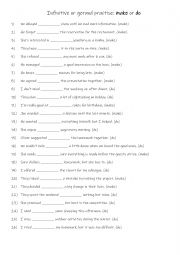
|
A2-B1 Gerund or infinitive practise
Students read the sentences to see if a gerund or an infinitive is required to complete the sentences. Answers on page 2.
Level: intermediate
Age: 9-100
Type:
Downloads: 114
|
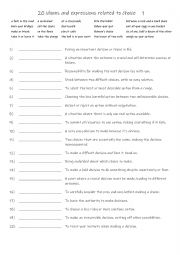
|
B1+-C1 Choice idioms and expressions 1
First, students need to familiarise themselves with the 20 idioms and expressions and their meanings. Then they read the definitions to see which one is being described and write that word in the space provided Answers on page 2.
Level: intermediate
Age: 12-100
Type:
Downloads: 106
|
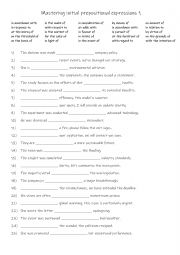
|
B2-C1 Mastering 25 prepositional expressions 1
Mastering initial prepositional expressions is important for improving fluency and precision in English communication. By focusing on prepositions that commonly introduce phrases, you can strengthen your ability to express relationships between ideas, such as time, place, or cause and effect. Additionally, mastering these expressions enhances both ...
Level: advanced
Age: 10-100
Type: worksheet
Downloads: 114
|
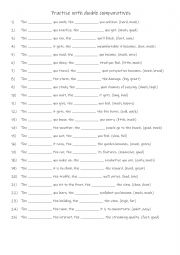
|
A2+-B1 Double comparatives
Double comparatives are a useful structure in English to express proportional relationships between two actions or situations, showing how one thing influences or depends on another. The structure typically follows the pattern: "The + comparative adjective + subject, the + comparative adjective + result." This construction helps convey cause-and-ef...
Level: elementary
Age: 9-100
Type:
Downloads: 129
|
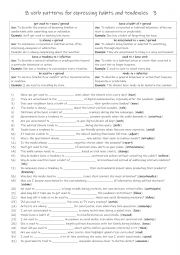
|
A2+-B1+ 8 verb patterns for expressing habits and tendencies 3
First, students need to familiarise themselves with the 8 verb patterns and their formation and use. Then they read the sentences to work out which one is needed to complete the gap-fill. Each verb pattern is used 4 times!
Level: intermediate
Age: 9-100
Type:
Downloads: 114
|
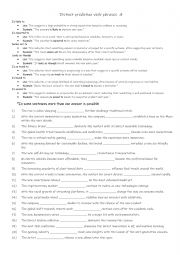
|
A2+-B1 7 Distinct prediction verb phrases 4
These phrases help express different levels of certainty about future events. "Is likely to" suggests something will probably happen based on evidence, while "is expected to" refers to something predicted or planned. "Seems set to" indicates something is prepared to happen soon, and "looks as though" is used when something seems probable based on c...
Level: elementary
Age: 9-100
Type: worksheet
Downloads: 145
|
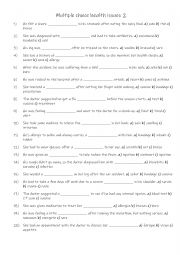
|
Multiple choice health issues 2
Students read the sentences and choose the correct word out of the given choices. Answers on page 2.
Level: elementary
Age: 10-100
Type:
Downloads: 112
|
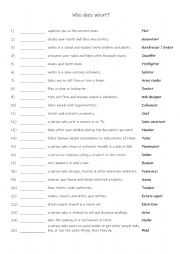
|
Jobs
This worksheet contains several updated jobs: influencer, vendor, web designer, bouncer and paparazzi. When the students have completed the job definitions they can be placed in pairs or small groups to enable a speaking component. Which of these jobs would you like / dislike and why etc? Note: I have just reuploaded this worksheet because the day ...
Level: elementary
Age: 10-100
Type:
Downloads: 142
|
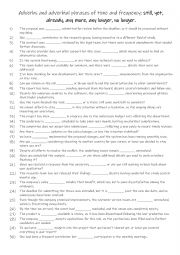
|
B1+-B2 Adverbs and adverbial phrases of time and frequency still, yet, already, any more, any longer, no longer.
These adverbs and phrases help students describe actions, events, and situations with greater detail, making their language more engaging and nuanced. Language proficiency tests often include questions that require understanding and using these adverbs correctly, so practicing them can improve exam performance. Understanding and using these adverbs...
Level: intermediate
Age: 12-100
Type:
Downloads: 132
|

|
A2+-B1 Practise with present simple, present continuous, past simple, past continuous, present perfect, present perfect continuous & future perfect 2
Learning key tenses such as the present simple, present continuous, past simple, past continuous, present perfect simple, and present perfect continuous enables students to communicate clearly by expressing actions and events with accuracy. These tenses cover a wide range of contexts, from daily routines and ongoing activities to completed actions ...
Level: elementary
Age: 8-100
Type:
Downloads: 144
|
|
|
|
|












